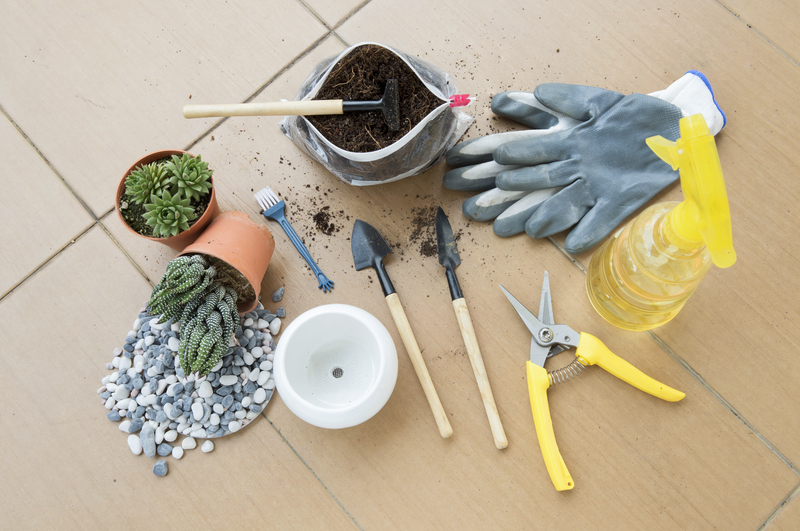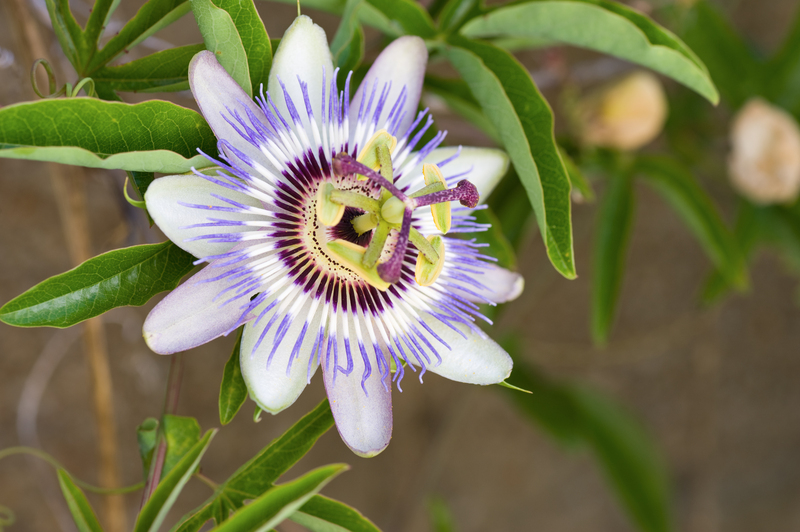Discovering the World of Container Gardening
Posted on 03/09/2025
Discovering the World of Container Gardening: A Comprehensive Guide
Are you searching for a way to bring lush greenery and vibrant blooms into your home--no matter how much space you have? Container gardening is your answer. This flexible, creative gardening style allows you to grow flowers, herbs, vegetables, and even small trees in pots and planters, making gardening accessible and enjoyable for everyone--from suburbanites to high-rise apartment dwellers.
In this ultimate guide to container gardening, we will explore everything you need to know, from the basics to expert tips, to help you create stunning container gardens that thrive. Whether you're a beginner or a seasoned pro, this article will empower you to discover the endless possibilities of the container garden world.
What is Container Gardening?
Container gardening simply means growing plants in pots or other containers instead of directly in the ground. This method of gardening is perfect for people who have little or no garden space, live in apartments, or wish to add greenery to patios, decks, and balconies.
However, the world of container gardening is more than just a solution for limited space--it's a highly creative, flexible way to garden, enabling you to display flowers, herbs, vegetables, succulents, and even dwarf fruit trees in endless combinations.
Benefits of Container Gardening
- Space-saving: Ideal for urban gardeners, renters, and those with limited yard space.
- Portability: Move your plants to follow the sun or shelter them from bad weather.
- Pest and disease control: Easier to manage soil and pests with isolated containers.
- Flexibility: Swap plants and arrangements based on seasons and personal style.
- Accessibility: Ideal for people with limited mobility or who want to garden at waist height.

Choosing Containers: Materials, Size & Style
Exploring the world of container gardening begins with selecting the right containers. Your choice not only impacts aesthetics but also plant health and ease of care.
Popular Container Materials
- Terracotta - Classic choice, allows air circulation but dries out quickly.
- Plastic - Lightweight, affordable, and retains moisture longer.
- Ceramic/Glazed - Adds color and design but can be heavy and pricey.
- Metal - Modern look; some metals can heat up quickly in the sun.
- Wood - Natural charm; ensure it's rot-resistant and non-treated.
- Fabric Grow Bags - Breathable, promotes air pruning of roots, easy to store.
- Repurposed Items - Boots, tubs, or baskets add whimsical flair.
Guidelines for Container Size
- Root Space: Most annual flowers and herbs need at least a 12-inch deep pot.
- Trees & Shrubs: Dwarf varieties usually require a minimum of 18"+ diameter containers.
- Vegetable Gardens: Ensure depth for root crops--carrots and beets need deeper pots than lettuce or radishes.
- Drainage: Always choose pots with drainage holes to prevent waterlogged soil.
Remember, the larger the container, the less often you'll need to water!
Best Plants for Container Gardening
One of the joys of container gardening is the endless variety of plants you can grow. The options depend partly on your light, climate, and personal taste.
Top Choices for Flower Container Gardens
- Geraniums - Bright, easy-care blooms for sunny spots
- Petunias, Impatiens, and Begonias - Continual color for balconies and patios
- Fuchsias - Gorgeous for hanging baskets in partial shade
- Ornamental Grasses - Adds height and texture
Edible Container Gardening Ideas
- Herbs: Basil, rosemary, thyme, mint, oregano, parsley
- Vegetables: Lettuce, tomatoes, peppers, eggplants, radishes, carrots
- Fruit: Strawberries, blueberries (in acidic soil), dwarf citrus or fig trees
Other Container Gardening Favorites
- Succulents and Cacti - Require minimal water, perfect for sunny locations
- Houseplants - Ferns, pothos, snake plants for shade or indoor spots
Soil & Fertilizer for Successful Container Gardens
The key to a thriving container garden is high-quality soil and the right nutrients. Never use garden soil alone, as it can compact in pots and may harbor diseases.
Recommended Potting Mix
- All-purpose potting mix: Good for most outdoor and indoor containers.
- Cactus/succulent mix: Drains well for desert plants.
- Seed starting mix: Lightweight and fine-textured for sprouting seeds.
- Compost & amendments: Mixing in finished compost, worm castings, or slow-release fertilizer gives plants a healthy boost.
Tip: Always check for consistent moisture: potting soils can dry out faster than ground beds.
Fertilizer Tips for Container Gardens
- Use a balanced liquid fertilizer every 2-4 weeks during the growing season.
- For heavy feeders (tomatoes, petunias), consider a slow-release granular fertilizer mixed into the soil.
- Organic options include fish emulsion, seaweed, or compost tea.
Designing Your Container Garden
How do you make your container garden stand out? Combine plants creatively for visual and sensory impact.
The "Thriller, Filler, Spiller" Formula
- Thrillers: Tall, eye-catching centerpieces like cordyline, ornamental grass, or compact shrubs.
- Fillers: Mounding plants to give body--petunias, coleus, parsley, oregano.
- Spillers: Trailing plants to drape gracefully--sweet potato vine, lobelia, ivy, nasturtium.
Additional Design Tips
- Cluster multiple pots of various heights for a layered effect.
- Use a consistent color palette or go bold with contrasting colors.
- Mix textures: fuzzy lamb's ear, glossy pothos, grassy sedges.
- Rotate containers for fresh seasonal displays.
- Choose containers that complement your home's design.
Watering and Maintenance: Keeping Container Gardens Healthy
Because potting soil dries out faster than in-ground beds, watering container gardens is a top priority. Here's how to ensure healthy plants:
Watering Tips
- Check daily--especially during heat waves.
- Water until it flows from the drainage holes.
- Morning watering is best to prevent fungal diseases.
- Pick self-watering containers for easier care.
- Mulch the surface with pebbles or compost to retain moisture.
Regular Maintenance Tasks
- Deadhead spent flowers to boost new blooms.
- Pinch or trim leggy stems for bushier plants.
- Remove yellowing leaves or fallen debris to limit pests and disease.
- Refresh potting mix every year or two for healthy growth.
Seasonal Container Gardening
While many see container gardening as a spring and summer activity, you can enjoy it year-round with the right plant choices and strategies.
Spring and Summer
- Bright annuals, vegetables, and herbs thrive.
- Switch out cool-season pansies for heat-lovers like zinnias and cosmos as the weather warms.
Autumn
- Plant decorative kale, mums, asters, and late-season edibles.
- Add pumpkins and gourds for festive flair.
Winter
- Evergreens, decorative twigs, and winter pansies provide cold-season beauty.
- Move non-hardy containers indoors or wrap pots to insulate roots from frost.
Troubleshooting Common Container Gardening Problems
Even the best container gardeners run into the occasional obstacle. Here are some common issues and solutions:
- Wilting Plants: Usually due to under-watering or roots getting too hot (move to a shadier spot or use mulch).
- Yellow Leaves: Can signal over-watering or nutrient deficiencies. Allow soil to dry, and feed with a balanced fertilizer.
- Pests: Watch for aphids, spider mites, or fungus gnats. Wash off pests or use organic insecticidal soap.
- Root-bound Plants: Roots circling the pot mean it's time to re-pot in a larger container.
- White Crust on Soil: Build-up of salts from fertilizer--flush the container with clean water.
Innovative Container Gardening Trends
Ready to elevate your gardening game? Here are some of the latest styles making waves in the container gardening world:
- Vertical gardens: Wall-mounted pockets or stacked planters make use of every inch.
- Self-watering systems: Take the guesswork out of moisture management with reservoirs and wicking systems.
- Smart pots: Sensor-equipped containers that monitor soil, moisture, and sunlight.
- Upcycled planters: Sustainability meets creativity in using buckets, barrels, or old furniture for planting.
- Indoor container gardening: LED grow lights and hydroponic kits bring veggie growing into kitchens and living rooms.

Frequently Asked Questions about Container Gardening
Q: How often should I water my container garden?
A: It depends on weather, plant type, and container size. In summer, daily watering may be needed; in cooler or shady spots, every 2-3 days might suffice.
Q: Can I reuse old potting soil?
A: Yes, but refresh it by removing roots, mixing in compost, and adding slow-release fertilizer. Avoid reusing soil from diseased plants.
Q: Do all containers need drainage holes?
A: Absolutely! Good drainage is vital to prevent root rot. If your favorite pot doesn't have holes, add them or use as a decorative cachepot with a functional liner.
Conclusion: Start Your Container Garden Adventure Today!
Discovering the world of container gardening opens up a whole new dimension of creativity and joy. With a little preparation and regular care, you can have fragrant herbs, healthy vegetables, juicy berries, or beautiful blooms, no matter your living situation. The endless options for containers, plant combinations, and design ensure there's always something new to try, making container gardening a rewarding journey for every plant lover.
Are you ready to create your own plant paradise? Grab a pot, pick a plant, and step into the colorful, fruitful, and endlessly fascinating world of container gardening today!

